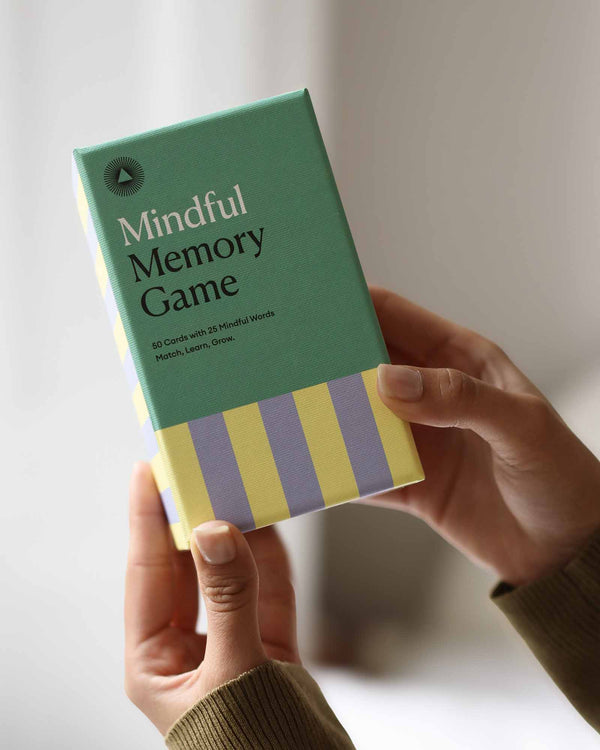Dealing With Grief and Loss
by Intelligent Change
Although a perfectly normal part of human life and experience, grief and loss represent one of the most delicate and touching subjects in psychology and everyday life.
Everybody deals with grief and loss differently. And while there are no rights or wrongs here per se, there are some healthy, mindful ways of dealing with the grieving process, while others may seem more detrimental.
In this article, we’ll explain what grief actually is, share some common myths and facts, and, most importantly, share tips on how to deal with it in as healthy way as possible.
Dealing With Grief and Loss: A Step-by-Step Guide
In order to explain an emotion as complex as grief, let’s first touch on some basic principles.
Primary Emotions
Humans and all other primates have six basic emotions:
- Happiness;
- Sadness;
- Anger;
- Fear;
- Surprise;
- Disgust.
Each of these has its natural trigger. Happiness is usually triggered by fulfilment, while sadness is triggered by a sense of loss.
Babies are usually happy when they recognize another human’s face or succeed at standing straight on both feet. They’re disgusted by distasteful food, and sad if they can’t get their favorite toy. As we grow up, these emotions become more and more generalized and sophisticated, and applicable to a broader social context.
But first, let’s answer one question: what does all this have to do with dealing with grief?
Sadness vs Grief
What is grief?
Grieving is a reaction to a tremendous personal loss. While sadness is a normal reaction to loss, grieving can be seen as its extension.
For example, we get sad when we lose an object that’s dear to us or hear about a tragic accident. But we don’t grieve. Why? We grieve when we experience a huge personal loss, job loss, breaking up a relationship, receiving news about a serious illness or death, or even selling our family home.
Sometimes, even subtle and very normal changes in life like finishing high school, moving to another country or switching a job can be perceived as a loss and we might need some time to grieve before we come to terms with them.
How we cope with loss and grief is one of the biggest challenges in human life. It might take time before we become able to recognize the emotional cocktail we’re experiencing: anger, sadness, denial, shock, guilt… which is why we say there is no right or wrong way to grieve.
It’s important to mention that grief and depression are not the same things. Depression is a state of pathological grieving, the kind of grief that lasts too long (usually over 6 months), with unchanged intensity, and prevents the person from living a life fully. Yet, when a person is prone to depression, the slip from grief to depression can easily happen if no preventative measures are taken.
Symptoms of Grieving
Grieving affects all aspects of our functioning, from physical, to emotional and cognitive. Here are the most common symptoms.
Emotional Symptoms:
- Sadness;
- Anger;
- Guilt;
- Blame;
- Confusion;
- Denial;
- Fear;
- Anxiety;
- Irritability;
- Panic;
- Loneliness;
- Shock.
Physical Symptoms:
- Nausea;
- Fatigue;
- Dizziness;
- Enhanced heartbeat;
- Sickness;
- Headache;
- Short breath;
- Extreme hunger;
- Extreme loss of appetite;
- Weight gain or loss;
- Hyperventilating;
- Chest pain;
- Sore muscles;
- Upset stomach.
Cognitive Symptoms:
- Confusion;
- Concentration problems;
- Memory problems;
- Loss of hope;
- Preoccupation with the object of grieving;
- Delusions.
Behavioral Symptoms:
- Crying;
- Overactivity;
- Complete inactivity;
- Irritability and aggressive behavior;
- Sleeping problems (sleep deprivation or too much sleep);
- Loss of interest in activities a person previously enjoyed;
- Restlessness.
Stages of Grieving

Before you come to terms with what has happened, emotions and symptoms can come in phases. We usually don’t have much control over it, but knowledge about the process can only help.
Although there’s no one way to conceptualize grieving, we can say that there are some standard stages, described by Dr. Elisabeth Kubler-Ross. These five stages are only an outline, not a fixed, linear path, and the real process can take various forms and orders.
Denial
Denial is a state of shock. If the loss is life-changing, we tend to think: “This isn’t real”, because we wish it wasn’t real. Shock can make us feel numb, as a defense from the sheer intensity of our emotions.
Anger
Once reality kicks in, you’re faced with an overwhelming amount of pain. Helplessness, hopelessness, and anger are normal consequences of this state. For many people, facing their sadness, pain, and vulnerability comes long after the layers of anger and frustration.
Bargaining
At this stage, we can be overwhelmed by guilt, or preoccupied with calculating what we could have done to prevent the misfortunate event. We ask ourselves “What if…” or dwell on things we didn’t do but could have. If you’ve ever experienced a relationship break-up or job-loss, you know how tiring this can be. What we need at this stage is to learn and accept that we’re not in control.
Depression
Reaching this stage actually means you’re progressing towards final acceptance. At this stage, you might experience sleep issues, excessive crying episodes, and a decrease in appetite. You may feel emotionally overwhelmed much more often than usual, as well as lonely, guilty, or regretful.
If this condition lasts longer than 6 months, consider seeking professional help.
Acceptance
Once you manage to accept the reality of your loss, you’ll still feel sad at the fact that nothing can be changed, however, you’ll feel like you’re finally able to continue with your life. That’s the stage of acceptance: moving on with your life and reinventing yourself after the loss.
Common Misconceptions About Grief
Like with many other things in life, there are some unhealthy social norms regarding grieving. As our goal is to demystify this process and illustrate that it’s normal to go through it, we will now list some of them–you may be surprised by the length of the list!
You Have to “Get Over It” as Soon as Possible
The more you fight it, the more you rush to “get it over with”, the tougher the battle will be, as you might end up stewing in prolonged denial that won’t let you reach the stage of acceptance. Be gentle with yourself, avoid pushing too much and go at your own pace.
It Will Never Go Away
This is true only if you allow it to be true. After experiencing a major loss, we need time to let go and reinvent ourselves.
It Will Go Away With Time
Time not necessarily heal everything. Active participation in the process through reflection (and any other type of mindful activities such as journaling and meditation), emotion analysis, or talking to other people may.
If You Grieve, It Means You’re Weak
As a society, we often avoid dealing with difficult emotions like grief. However, allowing yourself to go through those emotions shows strength, courage, and resilience, not weakness. Anyone can numb, escape or bottle up problems, but not everyone can step up and deal with their emotions.
Women Grieve More Than Men
Men are as vulnerable as women, except for the fact that society treats male vulnerability differently. If you’re a grieving man, you may have an additional layer to deal with–opinions and perceptions from your surroundings. In patriarchal societies, male grieving is often frowned upon or pushed under the carpet. Let us remind you: grieving is not a weakness, it is part of the healing for every human being.
Medication Is the Way Out
Medication shouldn’t be the logical response to a natural process like grieving. In case of a severe reaction and symptoms of depression please consult your doctor.
You’re Being Crazy
You might feel “crazy”, yet always keep in mind that you’re going through a state of emergency, and it’s okay to feel not like yourself.
It’s Ridiculous to Mourn Certain Losses
Another example of unfair social norms and prejudice. No one can tell you whether it’s adequate or not to be attached to your pet and mourn their death, or to grieve losing a job you really liked.
Once You’re Done, You’ll Go Back to “Normal”
Again, grieving is a process in which you adapt to new life circumstances. Things won’t go back to where they were; they will be different, but you will be able to live your life fully again.
You Can’t Grieve Over Something You Have Never Had
Actually, as humans, we do this all the time. We grieve over opportunities we missed or things we didn’t have in our childhoods. But, we have to be extremely careful here and remind ourselves that it can become toxic if the only thing we do is mourn over things we didn’t have while neglecting to be grateful for what we do have.
Grief Is a Single Emotion
Grief covers a whole spectrum of emotions–anger, guilt, fear, anxiety, melancholy, sadness–and we need time to acknowledge, process and let go of them when we are ready.
You Need to Stay Strong for the Kids
It’s a very delicate balance, but we believe that it’s better to choose honesty and explain to your children why you’re feeling sad rather than confuse them with cold and stiff reactions to pain. If you avoid showing emotions, your child won’t learn how to recognize them, nor what to do with their own emotions.
Tips on Dealing With Grief and Loss

There are no clear rules on dealing with grief and loss, but there are some things you can do to make sure you go through this process in the healthiest way possible. An excellent first step is that you’re here–acknowledging the grief and reading this article to discover how to cope with it.
Seek Support
When we see a crying person, the first impulse is usually to comfort them. This need is deeply ingrained in our genes, which is why it’s always recommended to seek support when grieving. Other people’s support is our natural remedy.
Although family is usually where we first turn to seek support, sometimes, when family members grieve together, they lose the capacity to support each other and the whole family group dynamic can become overwhelmed by difficult emotions. In such cases, it’s recommended to seek professional support like therapy or local support groups, or talk to your friends.
Face Your Feelings
Since grieving is such a complex emotional state, sometimes the most difficult part is to untangle what’s going on the inside and face those feelings.
Avoiding and suppressing our emotions can only make the burden heavier. The healing process can only begin once we acknowledge the pain we feel and make a conscious decision to face and deal with it.
Express Yourself
Sometimes grief feels like a huge, heavy load pushing us to unravel. But since we often don’t know what’s inside that load, we’re too scared to let it out. It may be helpful to express those feelings in some way. Here are some ideas on how to do that:
- Exercise. Hit the gym, go for a run, try swimming or consider pilates–any physical activity can help you let go of anger and balance your energy levels. Plus, it’s a great way to stay focused on your breath–the pillar of any type of meditation.
- Keep a journal. A reflective journal can be of great help as you go through the various stages of grieving. It’s a place where you can express all your thoughts without fear, shame, anxiety, or any unwanted consequences. You can use it to write letters to someone you lost, describe your feelings, draw, or write short stories. It’s a place where you can be raw and completely honest with yourself to the fullest, without any regrets.It’s your safe space to tell everything that you left unspoken.
- Even if you’re not a “talented” painter, you can still commit to some art therapy. Painting and drawing are a great way to express your feelings. Sometimes, simply experimenting with colors and shapes, getting lost in the state of flow, and trying to express them on paper can feel liberating. When you’re done, you can do what you want with your work. Put them in a box, on the walls, or burn them–whatever feels right for you.
- If this idea fits your situation and needs it can also be of great help: create a scrapbook or a collage with photos, sentences, screenshots of messages, or any other workable leftovers of the relationship you once had with the object of your loss.
Try to Practice Gratitude (Although It May Be Hard)
One of the healthiest and rewarding ways to fight off negative emotions and shed light on the good things in every experience is to practice gratitude, even when it’s hard. Sometimes, as little as five minutes per day can make a significant change in the way we feel, opening up new perspectives for us.
As we go through the grieving process, we can easily fall down into the void of hopelessness, resentment, and frustration and build a negative outlook on life. The Five Minute Journal, built on principles of positive psychology, is there to help you combat your limiting beliefs and pessimistic thinking and return a dash of positivity and light into your daily routine.
You can dedicate part of your gratitude practice to the object of your loss–the loving person, the hometown you left, something you no longer have–and express appreciation for having this experience in your life. Change the prompts of the journal, and write about the things you loved about them (it), valuable lessons you learned, or things you’ll always cherish. This won’t bring you instant joy, but it will help you regain a positive outlook on life and preserve special memories for years to come.
The process may trigger a lot of memories and tears, but that’s good: it keeps you in touch with your feelings and, eventually, it will help you let go of the past, move forward and rediscover joy.
Maintain Your Routines and Hobbies
It might seem impossible at first, but maintaining your routines, hobbies, interests, and regular activities can help you keep in touch with reality, stay sane and feel in control of your life. Of course, you can make slight changes in accordance with your feelings and introduce new rituals to your morning and evening routine.
Doing yoga in the morning, having breakfast with friends on the weekends, exercising, reading before bed or watching movies on Friday—it’s okay to keep doing everything that makes you feel calmer or happier. You started doing it because it made you feel good, so why stop now?
Be Aware of the Triggers
If you’ve lost someone you love, this can be particularly hard. Try to plan ahead for the upcoming potential grief triggers: their personal belongings, photos, birthdays, family holidays, or other important milestones and reminders. Be ready for the emotions to strike again and be aware that it’s completely normal, it’s all part of the grieving process, coping and rediscovering the new life.
Focus on Your Physical Health
In corpo sano, mente sana (a healthy mind in a healthy body).
There is a strong connection between our mind and body. If you allow the tremendous stress you’re going through to negatively affect your body, coping with grief will only be more difficult. Do your best at eating clean, sleeping well, going outside and exercising regularly. Avoid falling into the trap of staging home and numbing yourself with different substances. They will not take the pain away.
Summary: The Dos and Don’ts for Dealing with Grief
|
Do's |
Don'ts |
|
Seek support: loved ones, family, friends, therapy, support groups. |
Get disappointed if you can’t find support in your nearest environment. People often don’t know how to deal with others’ pain. |
|
Professional help should always be an option for you—there’s a good reason why professional helpers exist. |
Think there’s something wrong with you only because you’re considering therapy. |
|
List down your feelings, name them, think about them, process them. Try to simply be there with your sadness. |
Avoid, deny and numb feelings. It only leads to greater pain and prolonged grieving. |
|
Express yourself in a way that feels most appropriate for you. Crying, writing, talking, singing, dancing, working out. It’s your choice. |
Pretend like nothing’s happening. Expressing your emotions can help other people understand you better as well. |
|
Practice gratitude. |
Think that you’re disrespecting your loss if you put positivity in your focus as well. You’re not being ignorant, only more real. |
|
Keep your routines and hobbies alive. They’re an excellent connection to reality. |
Fall under the social pressure to behave and think the way other people think you should do. |
|
Be aware of the triggers that will come in the following months and years. Plan how and with whom you want to spend them. |
Ignore important upcoming dates, as they might hit you harder than expected. Old memories and emotions might overwhelm you, but this is an essential part of the grieving process. |
|
Take care of your physical health: eat properly, get enough sleep, exercise if you can, or at least take long walks. A healthy body will help you keep your sanity. |
Stay at home, avoid contact, numb your pain with different substances. |
|
Inform yourself: read about grief, sadness, and loss. It will help you realize you’re not alone–everyone suffers at some point in their life. Knowing that billions of people have been through it before you can help you realize that you can handle it. |
Think there’s no way out. You’re never alone, however, in some cases, you’ll need to dig deeper to find support. |
We know, dealing with grief can be scary. Regardless of what your loss is, it’s painful, mind-bending, and can seem like a never-ending chapter of your life.
You being here, reading this article is already an important and valuable step: knowing about what you’re going through helps shed light on the fact that you’re not alone, and there is a way out. With a dash of positive thinking, gratitude practice, and an open mind, we believe that everyone can overcome grief and loss and, with time, progress towards a fulfilling, joyful and mindful life.










